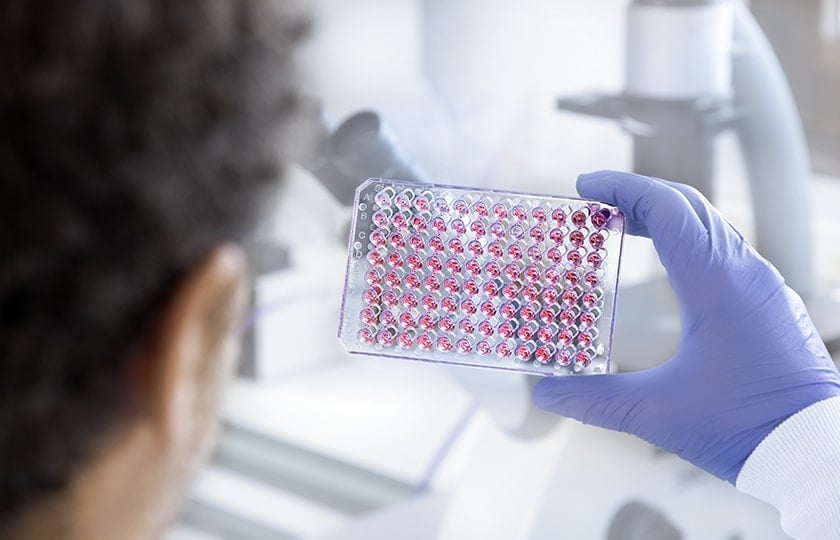High-Throughput Assays with Permeable Membrane Inserts
96 well inserts are the optimal tool for scientists who want to generate tissue models, such as endothelial and epithelial layers, for exploring transport, uptake, and co-culture phenomena in both submerged and air lift cultures with a streamlined, automation-compatible design. Additionally, these 96 well HTS inserts are ideal for investigating cell migration and invasion, enabling comprehensive analysis of cellular behavior with ease.
Relevance of air-liquid interface (ALI) cultures
Growing cells in an air-liquid interface (ALI) is a popular method for generating a stable and functional model of the respiratory tract by mimicking a pseudostratified epithelium in vitro. ALI cell cultures are widely used to study various processes related to the lower airways, such as disease modeling, in vitro drug screening, cell-to-cell signaling, and studies of lung toxicity caused by air pollutants.
How are ALI cultures set up?
To establish an ALI culture, epithelial cells are seeded into compartmentalized culture systems on porous membranes or gel substrates. After a propagation period, the culture medium is removed from the apical side of the epithelium, exposing the cells to ambient air. Therefore, nutrient supply to the cells is provided only by the basolateral cell pole. Under these conditions, the epithelial cells differentiate and regain their full baso-apical polarity.
The ALI culture is performed according to the following assay principle:
- Seeding preparation (general cell culture)
- Seeding cells in HTS insert (submerged expansion phase)
- Remove medium from the membrane plate and expose cells to air
- Replace medium in the receiver wells with differentiation medium
- Air lift cell culture (differentiation phase)
What are the benefits of air lift culture assays?
ALI cultures are of great use for investigating the biology of the airway epithelium and for studies of respiratory disease (e.g. COVID-19 research). There are already numerous studies published in highly prestigious journals such as Nature, The New England Journal of Medicine and other high-impact medical journals, with more to follow.
What other applications can be performed with the permeable membrane inserts?
In addition to air lift culture, cell migration and invasion assays are further important assay types facilitated by permeable membrane inserts. Cell migration plays an important role in diverse physiological and pathological processes including embryonic development, wound healing, immune response, inflammation, and tumorigenesis. Methods to study cell migration are therefore of great importance to provide a better understanding of the underlying biological mechanisms. Moreover, since the correlation between the in vitro migration potential of tumor cells and their invasive properties in vivo has been established, cell migration assays have also been used for screening anticancer drugs.
The Boyden chamber assay is one of the most frequently used assays for studying cell migration. First published in 1962 by Stephen Boyden, this assay is still employed in cell migration studies. It uses cell culture inserts with porous membrane filters and involves the migration of cells from the upper compartment through the pores of the membrane towards a chemoattractant source in the lower compartment.

Figure 1: Cell migration assay facilitated by permeable membrane inserts such as the ThinCert® 96 well HTS insert
Outlook
To enable such experiments, Greiner Bio-One has developed ThinCert® 96 well HTS inserts with respective pore sizes, which will be commercially available soon.
Do you want to learn more about the potential and applications of innovative cell culture products for high-throughput screening? Don't miss any important updates and subscribe to our blog series.
